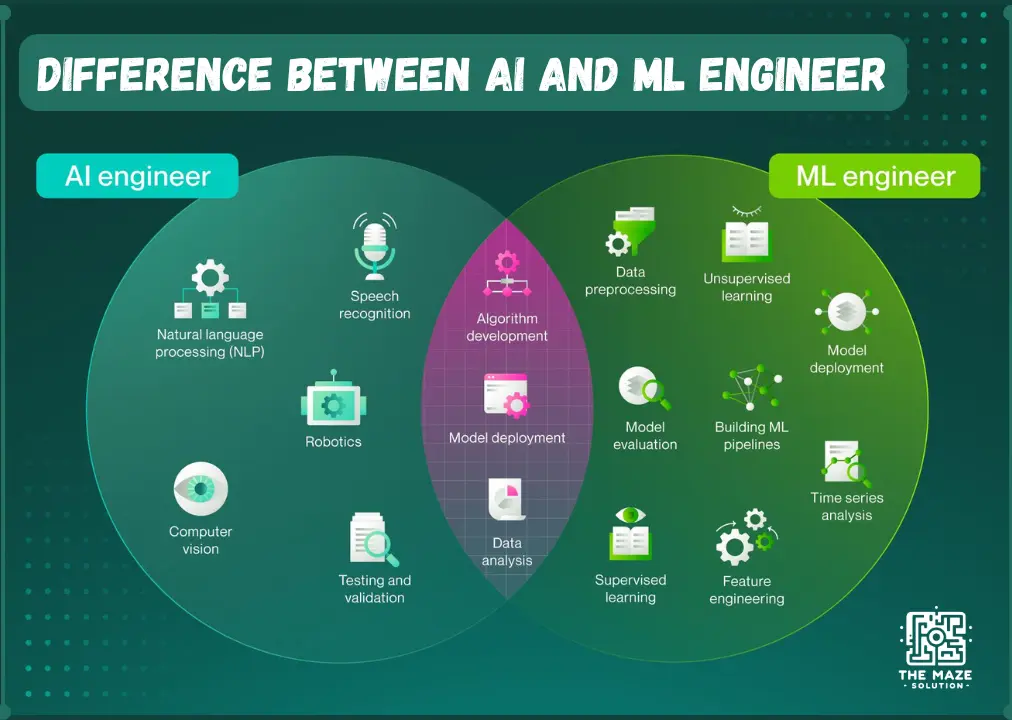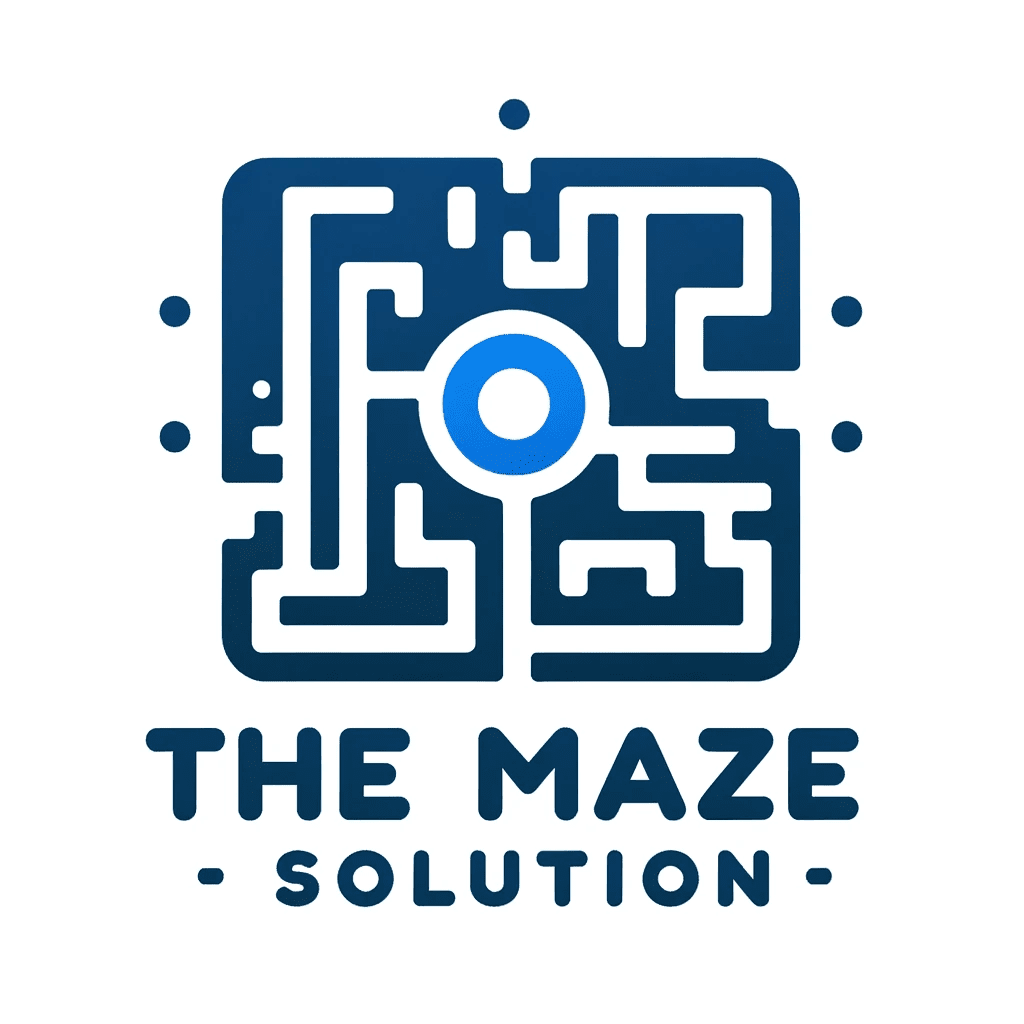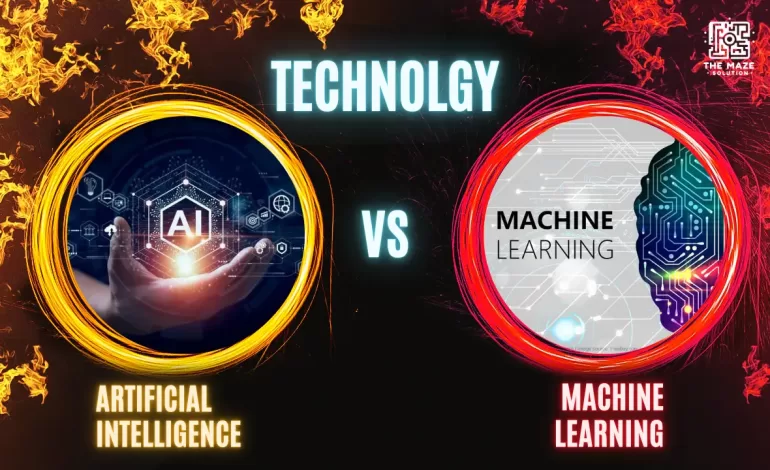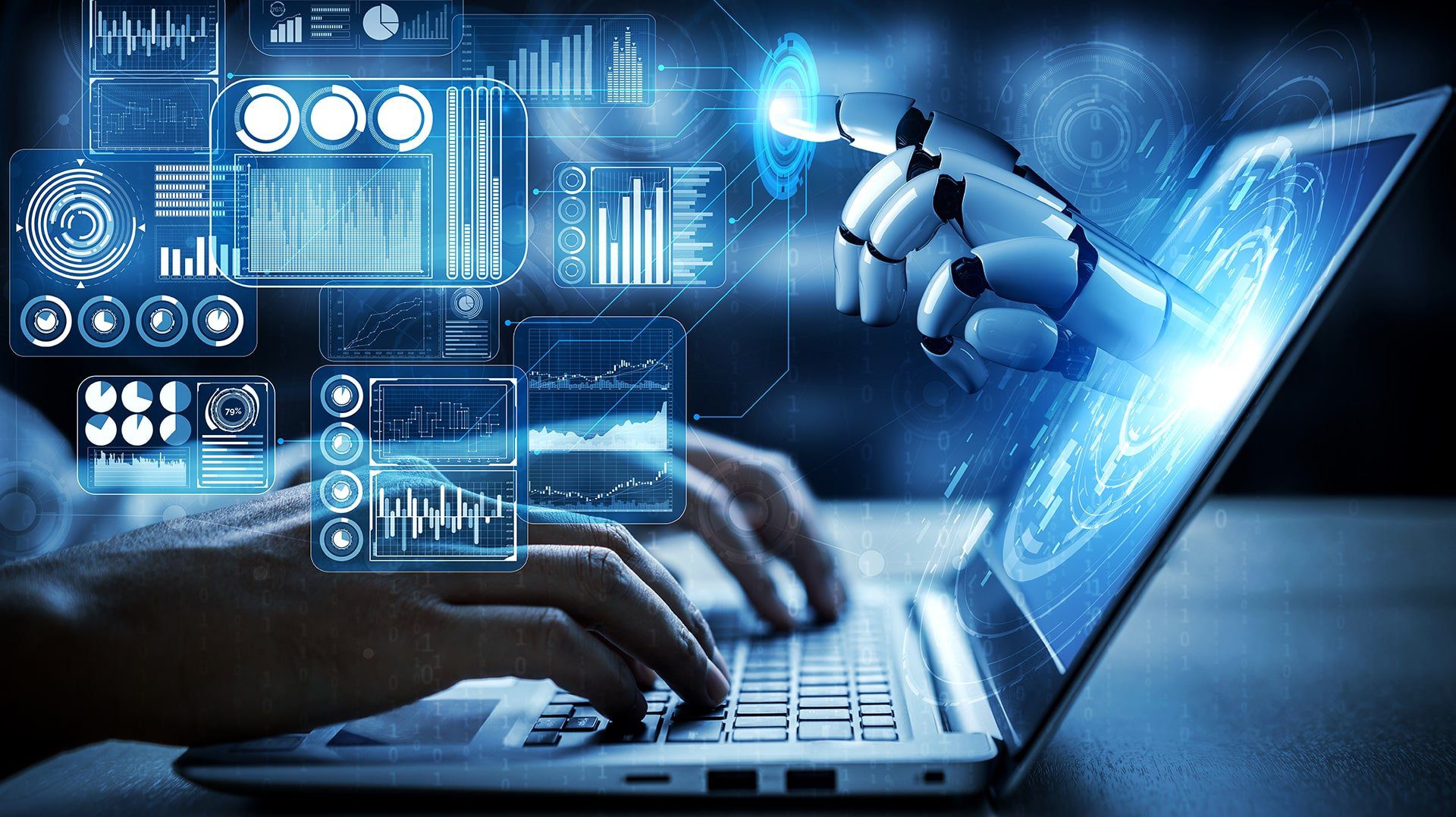Amazing Reasons Why Is Python Used for Machine Learning

Python is widely known as the preferred choice for Machine Learning because of its readability, extensive libraries, and community support. In the world of artificial intelligence and data-driven solutions, Python in machine learning has solidified its place due to its compatibility with other languages and scalability. Researchers, data scientists, and developers rely on Python for its versatility and the ease it brings to creating revolutionary technology. With the right approach, performance concerns, such as memory usage and algorithm complexity, can be addressed. If you’re just starting, taking online courses, exploring tutorials, joining communities and forums, and practicing through coding challenges or open-source projects are great steps to gain hands-on experience.
The Rise of Python in Machine Learning
Python has become one of the most popular programming languages for Machine Learning due to its easy-to-read syntax and extensive libraries. It’s widely used by ML professionals because it offers cross-platform compatibility, making it easier for developers to work across different systems. As a high-level, open-source language, Python is ideal for handling a wide range of machine learning tasks such as data analysis and deep learning. Its simplicity, combined with powerful tools, makes it a go-to choice for tackling both simple and complex machine learning tasks.
One of the key reasons for Python’s dominance in AI and ML is its vast library ecosystem and robust visualization capabilities, which provide developers with everything they need. With a low barrier to entry, strong community support, and its flexibility, Python allows developers to easily work on tasks like image recognition, speech recognition, predictive analytics, and even developing autonomous vehicles. Additionally, its platform independence, combined with an active developer community, ensures that Python remains a leading language in AI projects worldwide.
Key Features of Python for Machine Learning
Easy-to-Read Syntax
In Reasons Why python ,One of the biggest reasons Python is popular among ML professionals is its easy-to-read syntax. Whether you’re a beginner or an experienced programmer, Python makes it simple to write and understand code. Object-oriented programming in Python helps developers organize and plan their work, allowing them to write clean code and succinct code. This user-friendly syntax also helps reduce errors and speeds up debugging, making the development process smoother. With Python, even complex ML algorithms become more manageable, which is why it’s a preferred programming language in the field of Machine Learning.
Extensive Libraries and Frameworks
In Reasons Why python , Python has an impressive range of extensive libraries and frameworks that make machine learning development faster and more efficient. Popular libraries like NumPy allow for efficient numerical computations and array operations, while Scikit-learn is perfect for tasks like classification, regression, and clustering. Pandas is widely used for data analysis and data manipulation, and TensorFlow and Theano provide powerful tools for deep learning. These libraries save developers time by offering ready-made solutions for common tasks, enabling them to focus on fine-tuning their ML models.
- NumPy: For numerical computations and arrays.
- Scikit-learn: For classification, regression, and clustering.
- Pandas: For data analysis and manipulation.
- TensorFlow: For deep learning and distributed computing.
- Keras: For building neural networks.
- PyTorch: For dynamic deep learning with flexible computation graphs.
Cross-Platform Compatibility
Another key feature of Python is its cross-platform compatibility, which means that Python code can run on different operating systems like Windows, Mac, and Linux. This flexibility allows developers to create applications that work on multiple platforms without needing to rewrite their code. However, it’s important to test code on all platforms to avoid compatibility issues. This feature is especially useful for large-scale ML models that need to work across various systems, making Python a highly scalable solution.
Performance and Scaling
While Python is known for its simplicity, it also performs exceptionally well when it comes to handling big data and scaling up operations. Libraries like Apache Spark and Dask are commonly used to distribute workloads across multiple processors, enhancing Python’s performance for complex ML tasks. Additionally, tools like Cython can optimize Python code to run at near-C speed, ensuring that even large-scale projects run efficiently. This ability to scale and maintain high performance has made Python a top choice for Machine Learning applications that require processing massive datasets.
- Apache Spark: For distributed computing.
- Cython: For optimizing Python code to run faster.
- Dask: For scaling operations in Python.
By leveraging these features, ML professionals can take full advantage of Python’s strengths to build robust, scalable machine learning models.
Machine Learning and AI : what’s the difference?
| Aspect | Artificial Intelligence (AI) | Machine Learning (ML) |
|---|---|---|
| Definition | AI refers to the broader concept of machines being able to carry out tasks in a way that simulates human intelligence. | ML is a subset of AI that focuses on the ability of machines to learn from data and make predictions or decisions without being explicitly programmed. |
| Functionality | AI can mimic human behavior and decision-making, performing tasks like speech recognition, problem-solving, and responding to commands. | ML allows machines to learn from historical data and improve their accuracy over time for predicting outcomes, classifying data, and making decisions. |
| Types | AI includes types like Reactive Machines, Limited Memory, Theory of Mind, and Self-Aware systems. | ML models use techniques like supervised, unsupervised, and reinforcement learning to process data and improve tasks like classification. |
| Decision Making | AI systems can use a combination of programmed rules and learning from past data to make decisions. | ML relies solely on algorithms and historical data to identify patterns and make decisions. |
| Examples | AI powers systems like autonomous cars, robots, and virtual assistants that mimic human behaviors. | ML is used in applications like self-driving cars, Face ID, search algorithms, and product recommendations. |
| Learning Process | AI systems can learn from experience, but not all AI is designed to learn. | ML is explicitly focused on learning from data and improving over time. |
| Usage | AI is applied to a wide range of fields, including robotics, healthcare, finance, and more. | ML is commonly used for tasks involving data prediction, classification, and clustering in fields like e-commerce, tech, and data science. |
| Data Dependence | AI can be programmed with logic-based rules and doesn’t always rely on large amounts of data. | ML is heavily dependent on large datasets for training and improving the accuracy of models. |

Comparing programming languages with Python
Comparison with Java and C++
Python stands out from other programming languages like Java and C++ because of its simplicity and adaptability. The syntax of Python is clear and concise, making it easier for both beginners and experienced developers to write readable code. Unlike Java and C++, which require more boilerplate code, Python’s object-oriented nature allows for quicker development and easier debugging. This Reasons Why python an ideal choice for rapid prototyping and experimentation, which is essential in the fast-paced world of machine learning.
Comparison with ROR
When comparing Python with ROR, which is often used for statistical analysis, Python has the upper hand because of its vast ecosystem of libraries such as TensorFlow, Keras, PyTorch, and scikit-learn. These pre-implemented functions and models in Python speed up the development process, making it easier for developers to build ML applications. Although ROR also has libraries like caret and randomForest, Python’s community support, extensive documentation, and growing number of resources make it more accessible for machine learning enthusiasts.
Cross-Platform Compatibility
One of the key advantages of Python is its cross-platform compatibility, allowing it to run on Windows, Mac, and Linux without needing to rewrite the source code. This is a huge benefit compared to languages like Java or C++, which may require additional adjustments for different operating systems. The ability to easily integrate with web frameworks, data analysis tools, and cloud services makes Python an excellent choice for building end-to-end machine learning applications. With the support of tools like NumPy and JIT compilation, Python handles large datasets efficiently, even if its performance is slightly behind Java or C++ in computationally intensive tasks.
Real-World Applications of Python in Machine Learning
Real-World Applications of Python are explained below:
YouTube: Personalized Content Recommendations
In Real-World Applications of Python ,YouTube, one of the largest video-sharing platforms, relies heavily on Python for its content recommendations. By analyzing user behavior and preferences, Python-based algorithms are able to suggest the most relevant videos, keeping users engaged. This use of machine learning helps YouTube create a more personalized experience, ensuring that users find videos they are most likely to enjoy, making Python a key player in YouTube’s recommendation system.
Google: AI-Powered Solutions
In Real-World Applications of Python ,Google utilizes AI and machine learning across various products, from its search engine to Google Assistant. The versatility and efficiency of Python have made it a central tool in developing these complex systems. Whether it’s ranking search results or offering personalized voice responses, Google’s success in delivering accurate results is due in part to Python’s robust machine learning algorithms. Its adaptability ensures smooth integration across a wide range of AI-driven services.
Spotify: Tailored Music Recommendations
Spotify, a leading music streaming service, uses Python to deliver personalized music recommendations. By studying users’ listening habits, analyzing their playlists, and other key data points, Python-based algorithms ensure that users are continuously introduced to new music that matches their taste. Python’s ability to handle large datasets efficiently plays a significant role in enhancing Spotify’s recommendation engine, making it a key technology behind the platform’s success.
Reddit: From Common Lisp to Python
In Real-World Applications of Python ,Reddit, the popular social news aggregation and discussion website, underwent a major shift when it transitioned its codebase from Common Lisp to Python. This switch allowed Reddit to leverage Python’s vast libraries and flexible framework, making it easier for developers to add features and scale the platform. The move to Python contributed to Reddit’s growth and efficiency in handling vast amounts of user-generated content and discussions.
Instagram: Enhancing User Engagement
In Real-World Applications of Python ,With hundreds of millions of users, Instagram also benefits from Python to create a more personalized experience. Machine learning algorithms help in offering personalized recommendations and organizing the content users see on their feed. These content ranking systems, powered by Python, improve the user experience and boost engagement by displaying posts that are most relevant to individual users, making Instagram more addictive and interactive.
ChatGPT: Revolutionizing Language Interaction
In Real-World Applications of Python ,ChatGPT, developed by OpenAI, is a revolutionary language model built with Python. Its advanced natural language processing capabilities have opened new doors for virtual assistants, chatbots, and other interactive language-based applications. Python’s ease of use and its strong community support have been crucial in building a system capable of understanding and generating human-like text. This showcases the transformative impact of Python in fields that require complex algorithms and interactive technology.
Challenges and Limitations of Using Python for Machine Learning
Performance Concerns
While Python is known for its simplicity and flexibility, it may not perform as well as other languages like C++ or Java in certain computationally intensive tasks such as deep learning. The slower speed of Python can be a challenge, especially when handling tasks that require high performance. However, developers can optimize the performance concerns by utilizing techniques like parallelization and just-in-time compilation. Additionally, memory usage and algorithm complexity should be managed carefully in projects like self-driving cars, where factors like speed, distance, and speed limits play a critical role in successful navigation.
Learning Curve for Machine Learning
Although Python has a clear syntax and is generally easy to learn, mastering machine learning requires a deep understanding of AI and computer science concepts. Beginners may find it challenging to grasp the advanced aspects of ML concepts despite Python’s user-friendly design. To overcome this learning curve, it’s important to engage with online courses, follow tutorials, join communities and forums, and practice consistently. Through hands-on practice, learners can gain the confidence to work on more complex tasks and projects.
Conclusion
Python has proven itself to be a powerful programming language in the world of machine learning and AI, thanks to its wide array of frameworks, libraries, and strong community support. Its clear code, compatibility, and being easy to learn make it the ideal choice for both beginners and experienced developers. Python’s ability to handle complex applications like image recognition, speech recognition, and predictive analytics showcases its versatility and adaptability. Moreover, hands-on practice through projects, coding challenges, and real-world scenarios helps learners deepen their understanding of Python’s capabilities.
For those looking to master Python for machine learning ,engaging in practical exercises, joining hackathons, and contributing to open-source projects can provide valuable experience. With a wealth of online courses, tutorials, and resources available, anyone can overcome the initial challenges and limitations. With enough dedication, Python unlocks incredible potential for developing sophisticated solutions, including autonomous vehicles and more.





